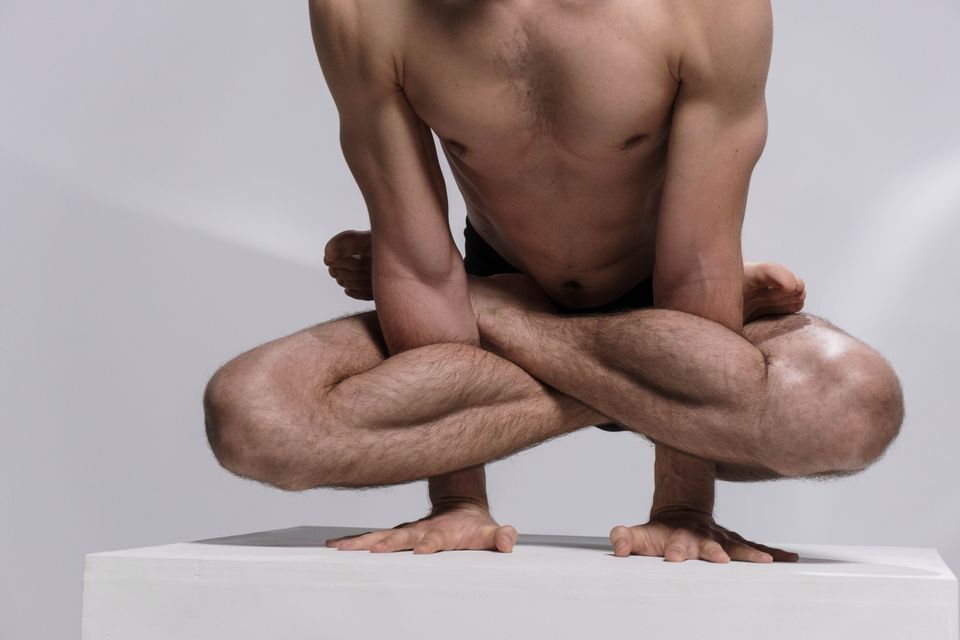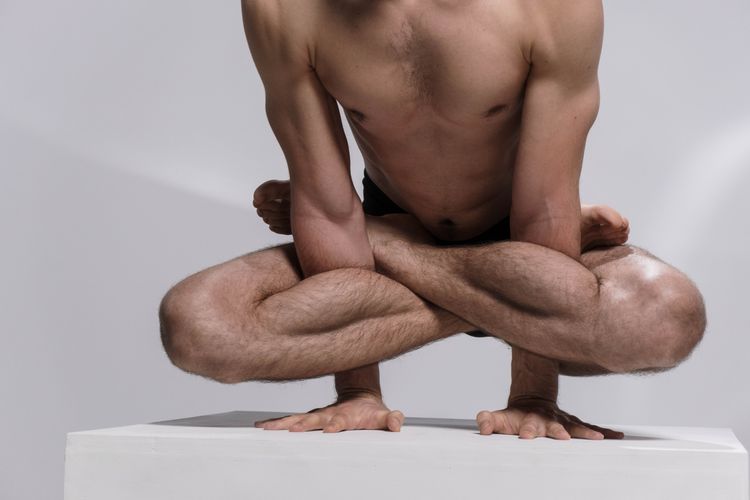PT Crab 🦀 Issue 167 - Best of Hip

We’re sliding on down to the hips this week as we near the end of this tour of best of’s and get ready to launch into new content. Before we get there, two things!
1) The Supporters edition of PT Crab counts as continuing education in Colorado, Michigan, North Carolina, Virginia, Vermont and Utah. Details here.
And 2) since some people in the survey (still up to complete, here) have indicated that they didn’t know about it, there is a supporter’s edition of the Crab. That one doesn’t have advertisements and always has three articles per week while this one receives 1 per week, once we get back to our normal routine and out of our “Best Of” editions in a couple of weeks. If you’re interested in getting more and supporting the Crab, you can do that for less than $5/month here.
And with that, let’s look into the hip.
There are no internal rotators
The Gist - Okay, that’s obviously not true, but there aren’t any primary internal rotators of the hip at least. That’s what Donald Neumann determined from his deep dive into this topic for a clinical commentary in JOSPT a few years ago. He looked into a bundle of cadaveric research to create some great graphics and information about the roles of every muscle in the hip complex. It’s a dive twice as deep as I’ve seen anywhere else and it’s well worth your time. But obviously I’m going to summarize it because that’s what I do. Though I’ll warn you that the majority of what is elucidated here is from the study of one male cadaver with info from elsewhere sprinkled in. I’m not going to list out every muscle action, that’s what the paper is for. Rather, I’m just going to highlight some interesting info and let you dig into the rest.
For example, the hip flexor section is quick to point out that the major hip flexors are multi-joint muscles and thus the abdominals become essential in resisting an anterior pelvic tilt. This also points out why someone with weak abs may have excessive anterior pelvic tilting. Indeed, the abs have been shown to activate prior to psoas major when flexing the hip. And, taking the paper the step deeper that I love, Neumann also notes that tension in the secondary hip flexors, like adductor brevis, gracilis, and glute min, could cause excessive lumbar lordosis too.
The paper takes similar dives into extensors, internal and external rotators, and ad/abductors too, so look there for more.
Tell Me More - Since I found internal rotation so specifically interesting, I’m going to dive into that topic more deeply here. Based on angle of pull in anatomical position, there are no primary internal rotators of the hip. That’s not the primary role of any muscle. The secondary ones are glutes med and min, TFL, adductors longus and brevis, pectinues, and adductor magnus. Additionally, computer-based study has demonstrated that many primary external rotators, like piriformis and the gemelli, become internal rotators when the hip is flexed >90°. Meanwhile, the glute med becomes a strong internal rotator when the hip is at 20-25°.
I had trouble coming to terms with the lack of primary internal rotators until I thought about athletic motions, like spinning while dribbling a basketball or cradling a lacrosse ball. One doesn’t often plant the right leg in front and spin to the right. It’s possible, but it takes momentum from the left side. Rather, it’s natural to plant the right leg and spin back to the left. This image helped me process the information.
Clinical speaking, the IR bias with hip flexion relates to crouch gait in CP. Their flexed hips causes the IR capability of their rotators to be emphasized, resulting in the typical internally rotated hips.
I don’t have space to go into other directions here, but if you treat hips this paper is a gold mine. Highly recommend.
Paper? Yuppers.
Run after hip arthroscopy? Yupp.
The Gist - Can you return to running after arthroscopic hip surgery for FAI or labral tears?
Yes.
Tell Me More - I’m kidding, let’s go back to the gist.
The Gist - This team of physicians and PTs wanted to come up with some kind of plan and protocol for returning to running after hip arthroscopy, so they did. And then they wrote about it. They used the program for 3 years with 400 patients who had undergone hip labral repair, acetabular rim resection, and/or osteochondroplasty and it appears to work well. They recommend starting the program 3 months after surgery for most patients and tell them to progress gradually, avoid hills, start on a treadmill first, recovery properly, and cross train. Then they give them a plan full of strengthening exercises, simple plyometrics, and recommendations on when/how much to run. Full details of what that looks like are in the paper. The basic structure is below.
Tell Me More - Again, for details, see the paper. The basic structure is a walking program that gets people up to 30 minutes at a brisk pace, then a quick response/plyometric program that progresses up to 500 foot contacts in a session (and videos of the exercises are linked to in the paper. How cool!). After that, it’s on to a walk/jog program and a very slow return to distance running as long as they can run without pain and don’t have it 48 hours later. As part of this, they establish a baseline distance to work from with specific guidelines on what to do each day relative to that baseline. It’s a well thought out program that’s easy to follow, so consider checking it out and adding it to your arsenal for your runners.
I’ll leave you with the researchers’ final words of warning: “The novel program proposed here has been used with success in our institution; however, it has not been validated with long-term outcomes, and therefore should be treated as a guideline that can be altered according to individual needs.” So be careful. But you already knew that.
Paper? Right here! Open access too!
What really causes IT Band Pain? Paul Geisler knows.
The Gist - This fantastic summary by an ATC, Paul Geisler, breaks down the complete history of ITBPS, including the current view of what causes the pain and how to fix it. The history section is incredibly interesting, starting with a description of the IT Band’s first discovery in 1843 and taking us through the entire pathohistorical pathway to understanding ITBPS. But I’m just gonna start with today’s deets, since that’s probably why you’re here.
Our current, evidence informed model of ITBPS says that the Ober test does not demonstrate a tight IT band, since the IT doesn’t limit adduction (glute med and min do) and that the IT band cannot be stretched. Even stretching TFL doesn’t help because of the IT’s multiple attachments to lower fascial and bone layers. Nor does the IT band roll over the femoral condyles, for the same reason. Rather, the cause of IT Band Pain Syndrome is related to impaired hip musculature that allows femoral drift into the frontal plane in running, leading to femoral adduction and IR that causes sub-IT band fat pad impingement. And since causes took that much room, let’s go to the next session for assessment and treatment.
Tell Me More - Assessment is recommended to be a thorough history that includes recent changes in training volume or any hill running (esp. downhill) and both history and (possibly) palpation that demonstrate sharp, focal lateral knee pain. You can also have the person jog for about 20 minutes on a treadmill and watch for femoral adduction at the end, during the stance phase, demonstrating lack of hip control.
Treatment? The author goes through three levels of management, so I won’t dive into all, but here’s the gist:
- 1 - Low-load, open chain phase focusing on motion control in hip exercises
- 2 - Moderate-load, closed chain phase focused on keeping pain low, increasing endurance, and training hip control
- 3 - High impact, tolerance, and ready phase focussed on sagittal plane control, landing drills, flat ground running, and more
I highly recommend reading the whole paper. So, do that.
Paper? Yupp. Read it. Open access!
Weight Loss Reduces MSK Pain! A little bit…
The Gist - In my third systematic review of the day (why did I do this to myself?) we’re talking about weight loss. 38 glorious pages about whether weight-loss interventions (from 16 RCTs) reduce pain and disability in people with Knee or Hip OA and spinal pain. Good news, they do! In OA, weight loss provides small to moderate improvements in pain and disability. BUT this was only in trials with low-credibility evidence. Ouch. Weight-loss interventions did help people lose weight though, so that’s nice :). From what we know about OA, it looks like being overweight helps you get it, but losing weight doesn’t improve it. Regular PT works better.
Tell Me More - This article is riddled with data, subgroup analysis, and more. If you’re into all this, I highly recommend checking it out. This review was more than double the size of a previous one covered in PT Crab (way back in Issue 1) so it adds much more weight to the claim that weight loss doesn’t really help OA much. I’ve only talked about OA so far, but the trial included spinal pain too. What were the results there? Limited. Only 3 trials covered that topic and their data was extremely heterogenous. The researchers recommend throwing them out of your reasoning and I’m happy to comply. I leave you with this quote where the researchers reflect on what their data really means:
Although guidelines endorse weight loss as a core treatment for OA, our review suggests that exercise is a critical ingredient for managing OA. Weight loss might not contribute to greater effects on pain and disability. For example, we found that diet and exercise interventions led to greater improvements in pain and disability but no difference in weight loss…. Osteoarthritis management guidance should be cautious about overemphasizing the importance of weight loss for pain and disability, and instead focus on a comprehensive package of care, including exercise.
Whole paper? Sure, whole paper.
And that’s our week! Thanks for sticking around. Back next week with knees, then feet, then to regularly scheduled programming from then on.
Have a great week,
Luke






Comments
Want to leave a comment and discuss this with your fellow PTs? Join PT Crab and get summarized PT research in your inbox, every week.